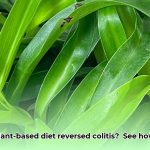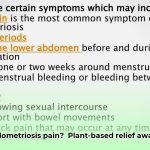Want to breathe easier and feel better overall? What you eat can significantly impact your lungs. This guide explores the connection between food and lung health, explaining how inflammation affects your respiratory system and how the right foods can help. We’ll explore foods that fight inflammation, provide easy ways to incorporate them into your meals, and even share sample meal plans. For more on anti-inflammatory diets, check out this helpful resource: anti-inflammatory foods. Let’s discover how a healthy diet can support easier breathing and a healthier life.
Anti-Inflammatory Diet and Lung Health
Let’s explore how focusing on anti-inflammatory foods can make a real difference in your respiratory wellness, leading to easier breathing. Eating well is important for your overall health and plays a big part in keeping your lungs happy and healthy.
Understanding Lung Inflammation: More Than Just a Cough
Lung inflammation is your body’s response to irritants or infections. Imagine your lungs getting irritated, maybe from something inhaled. Your body sends immune cells to fight it off, causing inflammation. While a little is normal, chronic inflammation can worsen conditions like asthma or chronic obstructive pulmonary disease (COPD). A healthy diet can support your lungs, helping reduce inflammation.
Anti-Inflammatory Powerhouses: Your Lung’s Best Friends
What you eat directly impacts your body, including your lungs’ health. Let’s explore some delicious foods that can help fight inflammation and support healthy lung function.
1. Fruits & Vegetables: Nature’s Multivitamins for Breathing Support
Brightly colored fruits and vegetables are bursting with antioxidants protecting your lung’s cells. Antioxidants are like tiny superheroes that fight off damaging molecules called free radicals, which can contribute to inflammation. Think of berries (strawberries, blueberries, raspberries), apples, oranges, grapefruits, leafy greens like spinach and kale, bell peppers, tomatoes, and pumpkin. Aim for at least five servings a day! Sneak them into smoothies, salads, or enjoy them as snacks. Lycopene, found in tomatoes, has been linked to improved lung function. Carotenoids, abundant in pumpkin, possess anti-inflammatory and antioxidant properties.
2. Omega-3 Fatty Acids: The Healthy Fats for Respiratory Relief
Omega-3s are superstars when it comes to reducing inflammation. Found in fatty fish (salmon, tuna, mackerel, sardines, anchovies), flaxseeds, chia seeds, and walnuts, these healthy fats help regulate your immune response, potentially lessening lung inflammation. Anchovies, though small, are a potent source of omega-3s and other essential nutrients. Aim for 2-3 servings of fatty fish per week. Flaxseeds and walnuts can also help you reach your omega-3 goals if you’re not a fish fan.
3. Turmeric: The Golden Spice Boosts Your Pulmonary Fitness
Turmeric, with its vibrant yellow hue, isn’t just a pretty addition to your dishes. It contains curcumin, a powerful compound with anti-inflammatory effects. Add it to curries, soups, stir-fries, or even your morning latte. Curcumin has been shown to reduce inflammation in the airways. While research suggests turmeric’s benefits, more studies are needed to determine the ideal dosage for lung health. Speak with your doctor before making significant dietary changes, especially if you already use herbal supplements.
4. Other Anti-Inflammatory All-Stars:
- Garlic and Onions: These pungent powerhouses contain compounds that have shown promising anti-inflammatory properties. Add them to your dishes for a delicious and healthy boost.
- Ginger: This spicy root is a well-known anti-inflammatory and antioxidant, adding flavor and health benefits to your meals.
- Green Tea: The antioxidants in green tea might have a positive effect on lung health, although research is ongoing. Epigallocatechin gallate (EGCG) found in green tea, boasts antioxidant and anti-inflammatory properties.
- Beets: Beets and beet greens are rich in nitrates, which have been shown to benefit lung function.
Remember: A varied diet provides the widest range of beneficial nutrients!
Sample Dietary Strategies: Tailoring Your Approach to Respiratory Nutrition
Everyone’s body is different, so what works for one person might not work for another. These are just examples; individual needs may vary significantly. Always consult your doctor before making major dietary changes, particularly if you have a respiratory condition or take medication.
For Asthma Sufferers:
- Focus: Prioritize fruits, vegetables, and omega-3 fatty acids. Some people with asthma find that dairy products increase mucus production, so you might consider limiting dairy intake if you notice this happening to you. Discuss this with your doctor or an allergist, as its effects can vary significantly.
- Example Meal: Start your day with oatmeal topped with berries and walnuts. Enjoy a salad with grilled salmon for lunch. A tomato-rich sauce with whole-wheat pasta can be a good dinner choice.
For Smokers (or Former Smokers):
- Focus: Increase your intake of vitamin C-rich foods (oranges, peppers, broccoli) to combat oxidative stress caused by smoking. Carotenoids (found in carrots, spinach, sweet potatoes, and pumpkin) are also beneficial.
- Example Meal: A breakfast smoothie packed with oranges, spinach, and bananas provides a great start. A hearty lentil soup for lunch is both nutritious and satisfying. Incorporate turmeric and ginger into your dinner recipes.
For COPD Management:
- Focus: A diet rich in antioxidants and anti-inflammatory compounds can help manage inflammation and improve breathing.
- Example Meal: Combine lean protein sources with complex carbohydrates and plenty of fruits and vegetables. Consider adding Brazil nuts for selenium, and edamame for isoflavones.
Important Considerations: The Bigger Picture of Respiratory Wellness
While research shows promising links between diet and improved lung health, more large-scale studies are needed to confirm these benefits fully. The impact of nutrition on lung health varies based on individual factors like genetics, existing health conditions, and other lifestyle choices.
- Consult your doctor: Always talk to your doctor or a registered dietitian before significantly altering your diet, particularly if you have an existing respiratory condition or are taking medication. They can help you create a personalized plan and assess potential interactions.
- Holistic Approach: A healthy diet is a crucial part of the puzzle, but it’s not the only piece. Regular exercise, quitting smoking (if applicable), and managing stress are equally important for optimal lung health. A balanced approach that includes these factors makes for the best outcome.
- Hydration: Adequate water intake helps thin mucus, making it easier to clear from the lungs.
- Ongoing Research: Our understanding of nutrition and lung health is constantly evolving. Keep an eye out for new research and updates – there’s always more to learn!
Dietary Recommendations Table for Lung Health Promotion
| Food Group | Examples | Anti-inflammatory Benefits | Serving Suggestions | Potential Interactions/Considerations |
|---|---|---|---|---|
| Fruits & Vegetables | Berries, apples, citrus, leafy greens, tomatoes, pumpkin | Rich in antioxidants; combat free radicals | 5+ servings daily; incorporate into meals and snacks | Individual allergies may occur. |
| Omega-3 Fatty Acids | Salmon, tuna, anchovies, flaxseeds, walnuts | Regulate immune response; reduce inflammation | 2-3 servings of fish weekly; include nuts and seeds daily | May interact with blood thinners; consult your doctor |
| Spices | Turmeric, ginger, garlic | Contain potent anti-inflammatory compounds | Add to various dishes and beverages | Generally safe, but high doses might cause stomach upset |
| Other | Green tea, beets | Rich in antioxidants; may benefit lung health, Optimize oxygen uptake | 2-3 cups daily, Include in salads or as a side dish | Caffeine sensitivity can occur. |
Building a lung-healthy diet is a journey, not a race. Small, consistent positive changes can make a significant difference in your respiratory wellness.
How to Best Incorporate Anti-Inflammatory Foods into a COPD Diet Plan
Key Takeaways:
- A diet rich in fruits, vegetables, whole grains, lean proteins, healthy fats (especially omega-3s), and anti-inflammatory spices can improve COPD symptoms significantly.
- Processed foods, added sugars, and refined oils exacerbate inflammation and should be minimized for better COPD management.
- Individual responses vary, so a personalized approach is crucial, guided by a healthcare professional.
- Lifestyle modifications, including exercise and smoking cessation, are essential alongside dietary changes for optimal lung health outcomes.
- While research supports the benefits of an anti-inflammatory diet, more studies are needed to establish definitive recommendations.
Understanding Lung Inflammation in COPD
Chronic Obstructive Pulmonary Disease (COPD) involves lung inflammation. This inflammation makes it harder to breathe. A healthy diet can help reduce the inflammation. It’s essential for managing COPD effectively.
Anti-Inflammatory Powerhouses: Foods to Fight Inflammation Related to COPD
This section focuses on how to best incorporate anti-inflammatory foods into a COPD diet plan.
-
Fruits & Vegetables: These vibrant foods are packed with antioxidants, vitamins, and minerals that combat inflammation. Think blueberries, kale, spinach, and bell peppers, tomatoes, and beets. Add them to smoothies, salads, or stir-fries for a colorful boost.
-
Omega-3 Fatty Acids: Found in fatty fish (salmon, tuna, anchovies), flaxseeds,
- Plant-based Diet Colitis Remission: Success Stories - December 18, 2025
- Plant Based Diet Breast Cancer: Research-Based Benefits - December 16, 2025
- Plant-Based Diet Ulcerative Colitis Remission: Proven Benefits - December 15, 2025










